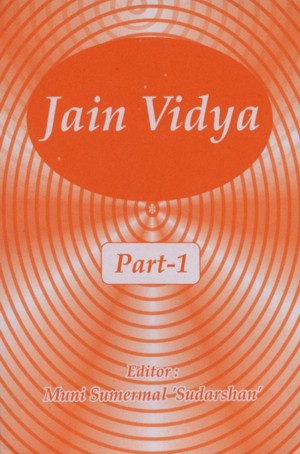Lesson - 23
Indriyas
(Sense-organs)
Dinesh: Suresh, Who are you?
Suresh: I am a Jiva (being).
Dinesh: In what sense are you a Jiva?
Suresh: I possess knowledge.
Dinesh: What benefits do you get from knowledge?
Suresh: Through knowledge, I recognize everything - something by touching, something by tasting, something by smelling, by seeing and by hearing or listening.
Dinesh: Tell me the nature of ice?
Suresh: It is cold.
Dinesh: Tell me the nature of fire?
Suresh: It is hot.
Dinesh: Ice is cold and fire is hot - how do you know?
Suresh: By touching it. The sense-organ, which gives us knowledge of a thing by touching is called Sparsh-indriya.
Dinesh: How is sugar?
Suresh: It is sweet.
Dinesh: How is lemon?
Suresh: It is sour.
Dinesh: Sugar is sweet and lemon is sour- how do you know?
Suresh: By tasting it through tongue. The sense-organ which gives us knowledge of a thing by tasting is called Rasana-indriya.
Dinesh: Have you ever smelt a rose flower?
Suresh: Yes, several times, it emits a very sweet fragrance.
Dinesh: Have you smelt kerosene oil?
Suresh: Yes, it emits a bad odour.
Dinesh: Rose flower and kerosene oil smell good and bad respectively, how do you know it?
Suresh: By smelling through nose.
Dinesh: The sense organ which provides us knowledge of a thing by smelling, it is called Ghrana-indriya.
Dinesh: What is the colour of crow?
Suresh: Black.
Dinesh: What is the colour of crane?
Suresh: White.
Dinesh: The crow is black and the crane is white- how do you know?
Suresh: Seeing it through eyes. The sense-organ which provides us knowledge of a thing by seeing is called Chakshu-indriya.
Dinesh: What is Ramesh doing today?
Suresh: He is singing.
Dinesh: How do you know?
Suresh: Hearing his voice through ears. The sense-organ through which we hear is called Shtotra-indriya.
Dinesh: The five sense-organs relate to touch, taste, smell, sight and hear. Some beings are one sensed, some two-sensed, some three sensed, some four sensed and some five-sensed, e.g.,
- One-sensed (touch) beings are earth, water, fire, air and vegetables.
- Two-sensed (touch and taste) beings are worms, oysters, insects, etc.
- Three-sensed (touch, taste, smell) beings are ants, flies, bugs etc.
- Four-sensed (touch, taste, smell, colour) beings are flies, mosquitoes, honey-bees, locusts, scorpions etc.
- Five-sensed (touch, taste, smell, colour, sound) beings are fish, crocodile, cow, buffalo, snake, bird, human beings etc.
Questions:
- Which is the sense-organ of hearing? What is known through it?
- Which is the sense-organ of seeing? What is known through it?
- Through which sense-organ do you feel sensation of hotness and coldness?
- Mention the names of four sensed beings.
- What are the subdivisions of one sensed beings?
[Note: students must memorise the names of five sense organs.]
